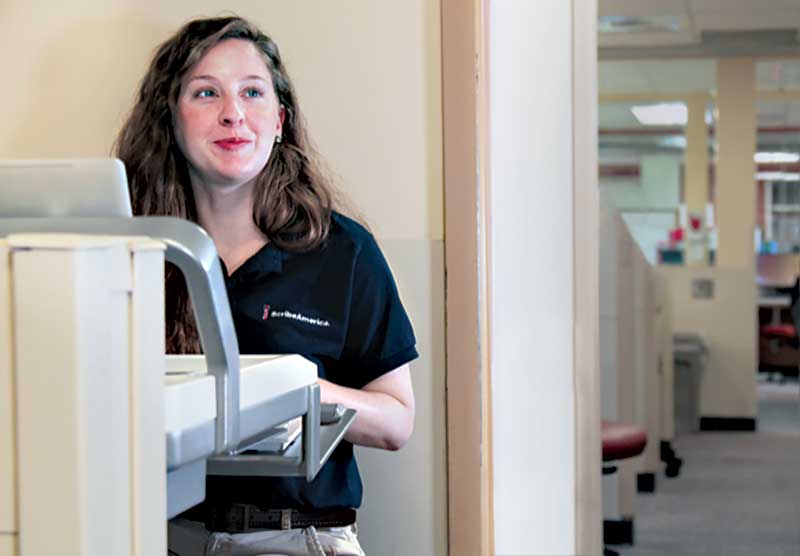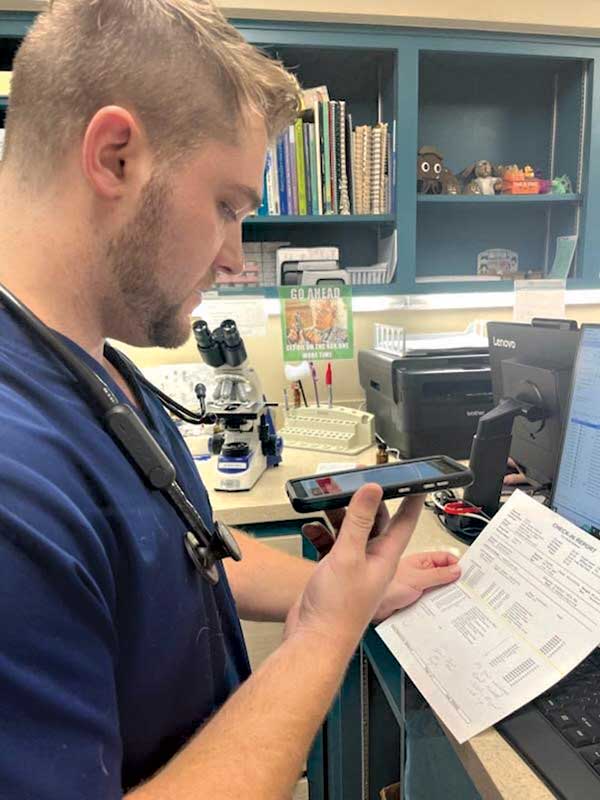
Veterinarians and their teams have been facing tremendous strain due to an upsurge in demand coupled with a shortage of available talent. This situation has placed them under immense stress, and one major source of stress is the process of charting.
While charting is legally mandated and vital for maintaining continuity of care, it is far from enjoyable or productive. This task, not aligned with the core training of veterinarians, has a range of detrimental effects on their overall well-being.
After all, charting contributes to the lengthening of work hours, intensifies time constraints, and adds to the already heavy administrative load. Further, the accuracy of documentation can be a subject of debate, and all these tasks are often performed on unwieldy and cumbersome systems. This activity diverges from what veterinarians are trained for and contributes to the broader impact on their sense of well-being.
However, the process of charting, though crucial, can be efficiently delegated to professional scribes. This outsourcing of charting tasks can significantly alleviate the burdens associated with the process, allowing veterinarians to focus on their core responsibilities and ultimately contribute to their overall professional satisfaction and mental well-being.
Types of scribes
Josh Noble, vice president of business development at ScribeAmerica, a Lancaster, Calif.-based company that provides scribes to hospitals and practices, says many veterinarians are practicing below license when put in front of the computer, not seeing pets, and talking with clients as much as they would like.
“What scribes are designed to do is to relieve the clerical burden of electronic record keeping and get veterinarians back to the bedside with the client and working at the top of their license,” Noble says. “One of the main challenges we try to solve for is burnout, which is nothing new to vet medicine.”
When it comes to scribes, Jacinthe Moreau, CEO and co-founder of VetSkribe, a Los Angeles-based virtual veterinary scribing service, shares there are different models, ranging from in-person scribes present in the room, virtual scribes listening to the consultation, to strictly AI-based tools processing consultation exchanges.
“Whether in person or remote, scribes’ responsibilities usually encompass note-taking and updating patient records,” Moreau says.
In the office
When it comes to in-person scribes, most of the job comes down to record keeping.
“The majority of vets these days have adopted an electronic record keeping system,” Noble says. “With that, there’s a sequential process that comes into play. Our scribes are in the room and present with the veterinarian as they are talking with patients with hands on the patient, documenting in real-time. It’s like a court reporter who is typing while things play out in the room. So, when a veterinarian leaves the room, the record is complete and are ready to move on to the next task at hand.”
An in-person scribe can also act as extra support staff and help with coordinating care. This can include making phone calls or finding results or tracking down a surgeon who did a surgery on the animal a few weeks ago.
“The vets don’t need to be sitting behind their computers and telephones doing clerical work; that’s really where the scribes come in at the office,” Noble says.
Remote scribes and AI
Some companies provide a scribe who listens to the entire visit and types notes in real-time into the practice management software (PIMS). Other services record the entire consultation and discussion between the doctor and pet owner, and the scribe types the notes based on the recording, uploading them into the PIMS.
“Typically, the doctor will review the patient’s record to ensure the scribe hasn’t missed anything, refine the notes, and add personal comments,” Moreau says.
At VetSkribe, veterinarians dictate their consultation notes in the app, exactly as they want the information to appear in their patients’ files.
“They add thoughts and observations about patients or pet owners that might not be discussed in the consultation room in the presence of the pet owner,” Moreau says. “Once the recording is complete, it is sent to our cloud-based platform and first undergoes our AI process. Secondly, it is reviewed by a professional scribe overseen by one of our veterinarians. Once their work on the transcription is complete, we upload the notes to the patient’s file in the practice system.”
Based on VetSkribe data, doctors spend approximately two hours per day on their notes, often working after hours at home. Using that time to see more patients could potentially lead to up to a 20 percent increase in productivity.
“On average, veterinarians see 16 patients per day, and our VetSkribe service saves an average of eight minutes per consultation, freeing up to two hours a day per doctor,” Moreau says. “Those two hours could be used to see four to six more patients. It takes about 1.5 additional patients to cover the cost of our scribing service. The rest results in additional revenue of approximately $100,000 per doctor, or free time.”
Noble notes one of the big benefits of remote scribe is you can take it with you anywhere.
“It’s a lot [nimbler] with staffing, and there’s also a price difference, as remote scribes operate at a lower cost,” he says. “The cons are you are losing out on the in-person touch and some of those extra tasks of care coordination and other tasks. This is more focused on the electronic record keeping. They can still hear and see everything, but they are documenting from their own home vs. being chair-side.”
For ScribeAmerica’s artificial intelligence (AI) option, ambient listening records all of what a veterinarian says to its clients and then it goes through an AI engine which creates a note that’s reviewed by the scribes and then added to the electronic record.
“AI has been the biggest buzz and evolution in the entire industry—bringing technology to the forefront,” Noble says. “We have the same goal with AI in how we can all work smarter and not harder. There’s no AI that’s perfect, so we do rely on the human element for the quality checks as well. It allows our scribes to work more efficiently.”
The key to matching the right scribe with the right practice is to see how much time a veterinarian is spending behind technology and what’s the best way to decrease that. That’s what opens up the door to a scribe conversation.
“We give our customers many different tools as one thing we have learned from 20 years of doing this is that one size does not fit all,” Noble says. “Everyone has different needs and needs for customization.”

First-hand experience
Stephen Long, DVM, associate veterinarian at Animal Medical Clinic in Melbourne, Fla., has been using VetSkribe for about a year, utilizing it on his phone during regular days at the hospital.
“The main benefit is speed,” Dr. Long says. “There are the patients that make me really grateful for the service. I can start my dictation and go over the subjective and my physical exam and then wait for my diagnostics and jump right back onto the recording. The recording only completes when I submit it.”
Another benefit Long found from using a scribe is improved client communications.
“When I have a long conversation with a client and no time to type it, I just add the client and patient on the add-on button, and start my dictation,” he says. “Then I just say into the app exactly what the client and I discussed. It’s uploaded the next day as a client communication, so those 5-10 minute notes—or longer—become 2-3 minutes dictation records on average. This really lets me catch up on call backs, review lab work the day before or just breathe during a busy day.”
Still, for all the benefits, scribes are not for everyone. For doctors that really like to have control of how their records look, whether that be format or how they prefer certain short hand notes, it may not be for them.
“That’s why the human component is great,” Long says. “I have multiple times gone back and added to the chat or dictation, ‘hey I forgot to say X, please put it in’ and they do it. I have been able to email them and say when I say sub-q, please just write SQ instead. So as long as you read your notes after the first couple submissions and catch what you like and don’t like, email the team and tell them.”
Marla Sanfilippo, senior vice president of national accounts at ScribeAmerica, notes with labor issues today, having a dedicated scribe can also take some of the worry away about staff coming and going.
Noble says a misconception about scribes is the cost is too expensive, and suggest tallying the ROI to see how in actuality, scribes are well worth it.
“It’s a catalyst for efficiency in these practices,” Noble says.
A graduate of the University of Miami, Keith Loria is a D.C.-based award-winning journalist who has been writing for major publications for close to 20 years on topics as diverse as veterinary medicine, travel, and entertainment. He started his career with the Associated Press and has held high editorial positions at publications aimed at healthcare, sports, and technology.
